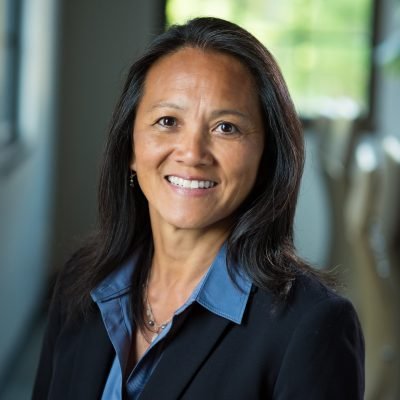Many life sciences sales reps remain effectively grounded and unable to make in-person visits to health care professionals. As a result, companies have shifted to non-personal promotion and virtual meetings with physicians. Though these tactics can be effective, in-person meetings are essential for many reps as they work to develop trust-filled relationships with HCPs and make compelling cases for their products.
Given these limitations, incentive compensation has changed in significant ways for many companies in recent months. We’ve seen companies signal that “we’re all in this together” by limiting downside risk for sales reps. Some have eliminated goals and commissions, moving instead to target payouts or MBOs. Others, whose sales are less impacted by the pandemic (for example, an oral oncology drug), have kept their existing plans intact but still lowered forecasts.
As companies look forward to patients returning to physicians’ offices for routine check-ups and elective procedures, they’re trying to determine at what point they can push “go” on more traditional incentive compensation plans. These plans present more downside risk but also more upside opportunity for the most successful reps. Identifying this tipping point is difficult. After all, even after a governor lifts a “stay at home” order, patients may still not feel comfortable going to doctors’ offices for physicals and blood draws.
Life sciences commercial leaders must think through many questions, including:
- Will HCPs now prefer virtual meetings with reps over in-person visits?
- Will pent-up demand create a v-shaped recovery in some categories (e.g., aesthetic drugs)? How do companies appropriately reward reps for sales driven by this pent-up demand?
- When will reps feel more confident about their sales prospects and begin to embrace higher-ceiling, lower-floor plans again?
Unfortunately, no one has all the answers today. But we know that companies can’t carry on with the “we’re all in this together” approach forever. For one, budgets will be impacted as sales forces get paid in full while product sales come in below forecast. And, as states open and reps prove they can be successful in the field, they’ll want to see their high performance rewarded. If the company doesn’t respond quickly, dissatisfaction and turnover could increase.
For the most part, companies are in a holding pattern on the incentive compensation front in Q2. But, as leaders plan for Q3, they must start considering adjustments. As they consider these adjustments, their top priority must remain the health and safety of their sales reps. We think companies, broadly speaking, have three options:
- They can stick with plans that address the needs of reps facing the most restrictions (or who don’t yet feel comfortable with in-person meetings). These plans will have a high floor and a low ceiling and represent a continuation of the “we’re all in this together” approach that is common today. Though this type of plan offers security for reps, it limits payouts for the highest performers and can therefore be demotivating.
- They can design plans that cater to reps with the most HCP access and highest sales potential. These more individualistic plans will reward high performers but present downside risk for reps who are still limited in terms of physician access or who prefer not to take face-to-face meetings. For the top performers, these types of plans will be motivating. For those struggling, they can be demoralizing.
- Finally, companies can create plans that meet the needs of both groups. Under this “best of” setup, a company runs both plans, and reps receive the higher payout of the two. This approach is not sustainable long-term due to its expense, but it can help the company account for the widest array of situations across the country during this uncertain time.
How can a company begin to decide on its course of action? We think there are a few ways commercial leaders can successfully navigate this uneven terrain and complex environment.
Have your ear to the ground. Right now, many sales reps may simply be happy to receive a paycheck. But, at some point, that will change. They will grow more confident and be willing to accept downside risk for the opportunity to earn more, if they perform. Companies must recognize when this shift happens. The only way to do this is to have your ear to the ground and be constantly communicating with the sales team while also intaking feedback from physicians about their preferences for sales interactions.
Be true to your culture. Some companies have “eat what you kill” sales cultures, while others are more collaborative. Neither of these is inherently good or bad. However, a company must be true to its culture in its response to the pandemic and reopening. Adopting a plan that is misaligned with the sales culture could alienate once-loyal reps.
Keep an eye on your data. Claims data could provide early indicators that patients are returning to medical facilities for routine check-ups and elective procedures. Closely monitoring trends in data (claims and beyond) can allow a company to identify key tipping points in the market and quickly pivot its incentive compensation plan in response.
No one can predict the future, but the key to navigating this complex incentive compensation environment is data-driven attentiveness and agility. Leaders can boil it down and ask themselves, “Can our reps find a way to make an impact today?” If so, hold them to it and give them the opportunity to earn a meaningful reward for their success. If not, stick with shared sacrifice. But be ready to pivot quickly.
Authors
- CECILE MARBELLA
- Cecile Marbella is a manager at Beghou Consulting. She works in the firm’s Evanston, Illinois, office. DAN SCHULMAN Dan Schulman is an associate partner at Beghou Consulting. He leads the firm’s San Francisco office.CECILE MARBELLA Cecile Marbella is a manager at Beghou Consulting. She works in the firm’s Evanston, Illinois, office.

- DAN SCHULMAN
- Dan Schulman is an associate partner at Beghou Consulting. He leads the firm’s San Francisco office.


